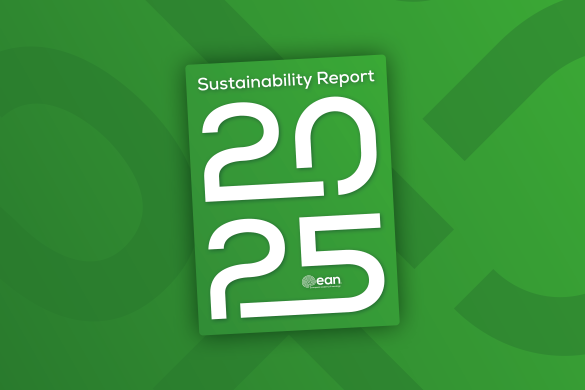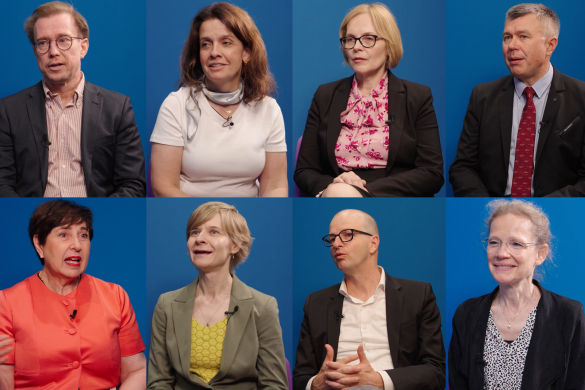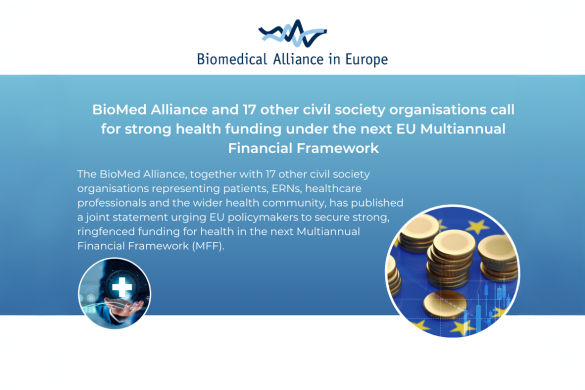Meta-analysis/systematic review (Red)
Read on for our highlighted selection of COVID-19-related meta-analyses and systemic reviews from the scientific press for November 2022:
*Note – starting in December 2022 our monthly COVID-19 Breaking News articles will be published under the new name ‘COVID-19 Research Roundup’*
Estimated Global Proportions of Individuals With Persistent Fatigue, Cognitive, and Respiratory Symptom Clusters Following Symptomatic COVID-19 in 2020 and 2021
Some individuals experience persistent symptoms after initial symptomatic SARS-CoV-2 infection (often referred to as Long COVID). The objective of this study was to estimate the proportion of males and females with COVID-19, younger or older than 20 years of age, who had Long COVID symptoms in 2020 and 2021 and their Long COVID symptom duration. In this study a bayesian meta-regression and pooling of 54 studies and 2 medical record databases with data for 1.2 million individuals (from 22 countries) who had symptomatic SARS-CoV-2 infection was performed. Of the 54 studies, 44 were published and 10 were collaborating cohorts (conducted in Austria, the Faroe Islands, Germany, Iran, Italy, the Netherlands, Russia, Sweden, Switzerland, and the US). The participant data were derived from the 44 published studies (10 501 hospitalized individuals and 42 891 nonhospitalized individuals), the 10 collaborating cohort studies (10 526 and 1906), and the 2 US electronic medical record databases (250 928 and 846 046). Data collection spanned March 2020 to January 2022. The main outcome and measure was the proportion of individuals with at least 1 of the 3 self-reported Long COVID symptom clusters (persistent fatigue with bodily pain or mood swings; cognitive problems; or ongoing respiratory problems) 3 months after SARS-CoV-2 infection in 2020 and 2021, estimated separately for hospitalized and nonhospitalized individuals aged 20 years or older by sex and for both sexes of nonhospitalized individuals younger than 20 years of age. A total of 1.2 million individuals who had symptomatic SARS-CoV-2 infection were included (mean age, 4-66 years; males, 26%-88%). In the modeled estimates, 6.2% (95% uncertainty interval [UI], 2.4%-13.3%) of individuals who had symptomatic SARS-CoV-2 infection experienced at least 1 of the 3 Long COVID symptom clusters in 2020 and 2021, including 3.2% (95% UI, 0.6%-10.0%) for persistent fatigue with bodily pain or mood swings, 3.7% (95% UI, 0.9%-9.6%) for ongoing respiratory problems, and 2.2% (95% UI, 0.3%-7.6%) for cognitive problems after adjusting for health status before COVID-19, comprising an estimated 51.0% (95% UI, 16.9%-92.4%), 60.4% (95% UI, 18.9%-89.1%), and 35.4% (95% UI, 9.4%-75.1%), respectively, of Long COVID cases. The Long COVID symptom clusters were more common in women aged 20 years or older (10.6% [95% UI, 4.3%-22.2%]) 3 months after symptomatic SARS-CoV-2 infection than in men aged 20 years or older (5.4% [95% UI, 2.2%-11.7%]). Both sexes younger than 20 years of age were estimated to be affected in 2.8% (95% UI, 0.9%-7.0%) of symptomatic SARS-CoV-2 infections. The estimated mean Long COVID symptom cluster duration was 9.0 months (95% UI, 7.0-12.0 months) among hospitalized individuals and 4.0 months (95% UI, 3.6-4.6 months) among nonhospitalized individuals. Among individuals with Long COVID symptoms 3 months after symptomatic SARS-CoV-2 infection, an estimated 15.1% (95% UI, 10.3%-21.1%) continued to experience symptoms at 12 months. The authors concluded that this study presents modeled estimates of the proportion of individuals with at least 1 of 3 self-reported Long COVID symptom clusters (persistent fatigue with bodily pain or mood swings; cognitive problems; or ongoing respiratory problems) 3 months after symptomatic SARS-CoV-2 infection.
Global Burden of Disease Long COVID Collaborators. Estimated Global Proportions of Individuals With Persistent Fatigue, Cognitive, and Respiratory Symptom Clusters Following Symptomatic COVID-19 in 2020 and 2021. JAMA. 2022 Oct 10. doi: 10.1001/jama.2022.18931.














